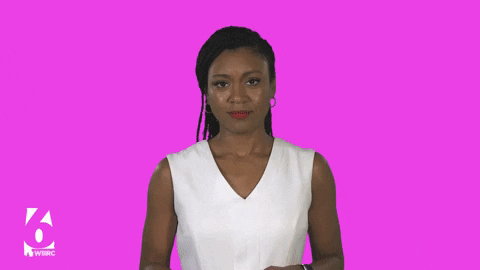Whether you start from scratch or use platforms like WordPress and Squarespace, building a website is no easy feat.

You spend hours drafting content, selecting the proper fonts, deciding brand colors, skimming through images and not to mention going back and forth on what layout to choose.
So, the frustration is inevitable when you realize your landing page isn’t driving the traffic you’d prefer.
While the list can be exhaustive, here are the top five reasons you’re not getting traffic to your website:
Your content is a snooze fest.
Audiences have short attention spans. If you don’t grab them quickly, it’s on to the next one.
Let’s say you’re a blogger who wants to write about fashion. Join the club of 30,000 others who want to do the same thing. So, how do you plan to stand out from the pack? Simply writing your opinion on whether kitten heels are here to stay (please, no) or the history of cheetah print isn’t going to cut it.

Many times, bloggers and other curators make the mistake of writing about what interests THEM. I see this mistake a lot with blogs, especially. Now, don’t get me wrong, it is important to create content that interests you, but it must be strategic.
In marketing and copywriting worlds, you’ll often hear “Content is King.” This means everything you do or achieve is largely impacted and influenced by how good or bad your content is.
Well, what’s the key to great content? One word: relevance.
Gone are the days where we simply push random content and hope for the best. Audiences want to read content that understands their wants, needs, opinions, and behaviors.
This means, you need to understand what interests, motivates and pushes a person to engage with your content (whether that means a click, a subscription or payment for a product)—and then, you focus on THAT.
You should: research current trends, sift through various media channels to familiarize yourself with conversations regarding fashion and use Moz or SEMRush to see what keywords in fashion people are looking for on search engine sites.
Your content is not SEO-friendly.
SEO-friendly content is content with the aim of increasing search engine traffic.
Writing content that consists of relevant keywords is helpful in increasing your rank. This helps Google recognize your site as one that is authentic and providing valuable content to someone searching for a specific topic or product.
Have you researched keywords to see what you can potentially rank for? What efforts have you taken to strategically maneuver the search engine results page (SERPS)?
If you have no idea how to create SEO-friendly content, here’s a guide to get you started.
Again, content is king, and it is key to having success online. Much of your site’s visibility is dependent on whether your site contains relevant keywords with a high search volume. This can be complicated, as you may run into keyword competition with other brands with the same idea. That’s why it’s important to have a multi-faceted plan with strong, supportive components outside of content.
Your linking strategy could use some work or, even worse, it doesn’t exist.
If content is king, then a solid linking strategy is your queen. A linking strategy involves a plan you create and implement to organize, track and optimize your links. This can impact a variety of things, from sales boosts to SEO ranking improvement.
A backlink is a reference from one website to your website. This can also be referred to as an inbound link. High-ranking sites with heavy traffic have relevant backlinks that direct traffic to their site. And when I say relevant, I mean sites with authority. A site with authority is linked to by many topic-relevant hub and expert pages, usually ranking higher for an associated term or keyword.
Why is link building so important?
Connections are everything. This is not only true in life, but in driving traffic to your site as well. Getting a link on a site with authority helps Google establish your site as valuable.
Think of backlinks as high-level references. If you’re being associated with a site that is perceived to be high-performing, it’s only natural for viewers to consider your site to be a valuable source of content and trust its information.
Birds of a feather flock together, right?

So how do you get these backlinks? You can try:
- Asking. Seems simple, but sometimes the only reason you don’t have something is because you don’t ask. Identify a high-performing site in your desired niche. Find a potential contact, reach out and ask for an opportunity to be a site they backlink to on a respective topic. Better yet, you can even research their content, create an opportunity and pitch it.
- Guest blogging. Find a relevant site or blog that allows you to publish your work. Be strategic in the topic you choose, as it should allow for you to link back to your website. Keep your focus on making sure what you are writing can be properly supplemented by your site.
- Testimonials. I don’t know about you, but before I use a product or service or even go to a new restaurant, I always read testimonials or reviews. Why? Because it helps build customer trust. How likely are you to use something if you don’t know anyone who can vouch for it? Same goes for backlinks. Offering a testimonial on a business page allows for a backlink to your site and provides a potentially customer-swaying review for the business. Everybody wins.
- Relationship building. Like I’ve said, relationships and connections are paramount to success. You need some new contacts to help get eyes on your site. Finding communities related to your niche is a great place to start. Try discussion board groups on social media, blogs or forums to create and participate in topics related to your niche. Identify key players and make it a point to connect with them frequently.
You CREATE more than you PROMOTE.
Now, I’ve seen many websites with promising futures, only to crash and burn in the land of Google’s 27th page. Sometimes, the content is great and incredibly valuable to a potential viewer. But it means nothing if you don’t have a solid promotion strategy in place.
A lot of people think the more they create, the more people will be attracted to their site. While this is somewhat true, the focus after content creation should be on promotion. What’s the use in pumping out great post after great post if no one sees it?
That’s why you should be spending more time PROMOTING. Consider the amount of time it took to create your content. Now double it. This is the amount of time you should spend developing a marketing plan.
Schedule social media posts that offer a snippet of your content and provide the link. Find out what days have the most activity on social media and capitalize. Use your IG story, Facebook profile, Twitter, LinkedIn, your never-ending group chat threads—ALL OF IT!

Now isn’t the time to be shy. Research keywords, buzzwords and hashtags to see what people are talking about and what’s trending. Where are the people you want reading and engaging with your content? Find where they live and knock on their door by making your site accessible.
How does your content relate? How can you meaningfully insert yourself into the conversation?
The user experience is less than stellar.
You’ve done the hard part, you’re getting traffic to your website. GREAT! But now, you’re seeing a high bounce rate. Not so great.
People are leaving your site left and right and you have no idea why. I’m willing to bet your user experience has people eliminating you from their endless supply of browser tabs.

Let’s face it—we are a culture of instant gratification and easy navigation. While this can be negative in some regard, it is gold standard when it comes to websites. Viewers want to be able to get what they came for, and they want to be able to find it without difficulty.
Take a look at your site and ask yourself these questions:
- Does my site load quickly (within 2 to 3 seconds)?
- Is my site mobile-friendly?
- Is my layout clear and easy to understand?
- Have I eliminated anything potentially distracting that could deter viewers?
If the answer to all of these questions isn’t “yes,” then it’s time to go back to the drawing board.
If you’re not certain you can be objective about where you need improvement, ask a trusted third party to review your site and offer insight about their experience.
Rule of thumb: Consistency. Consistency. Consistency.
Once you have all of these things in order, it’s important to realize that the work doesn’t stop there. You need to constantly review and adjust your strategy as you learn what is and is not working.
And remember, these are not the only reasons why your site is not performing. However, each one has an enormous impact on your site’s visibility. Once these are in order, it will be much easier to establish relevancy and generate more meaningful and engaged traffic.


